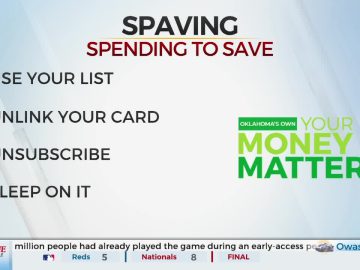©Shutterstock.com
This year brings an almost entirely new economic landscape. Inflation is finally waning; and, while the Federal Reserve is expected to cut rates later in the year, opinions differ as to exactly when that might happen.
Discover: 10 Expenses Most Likely To Drain Your Checking Account Each Month
Also: Pocket an Extra $400 a Month With This Simple Hack
In addition, the housing market is still difficult for many Americans, and the presidential election might not only shake the market but also potentially trigger new financial and tax regulations.
Against that backdrop, having a solid financial plan and road map for 2024 can help navigate these uncertain factors.
Cut Your Debt
In the face of the current economy, consumers must take care of their debt in 2024, said Andrew Housser, co-founder and co-CEO of Achieve.
“Consider that the excess savings that consumers built up during the pandemic has largely burned off,” Housser said. “We’ve seen the end of all forbearance on loans, the most recent of which was student debt loans. At Achieve, we’re seeing that the amount of consumer debt and financial stress is as high as it has ever been. We’re seeing higher-income people get into debt trouble.”
Amid all of this, he said there won’t be a “soft landing” everyone hopes for.
“It’s likely that we will still see a mild recession,” he said, “with the Fed starting to cut rates late this year.”
While Housser noted that there’s no one best solution, there is a solution for almost everyone.
“The time is now to bite the bullet and eliminate the debt,” he said. “From there, it’s possible to save at an accelerated pace, build that emergency fund, save up for goals you have and truly move forward with your finances.”
More: What Is the 75/15/10 Rule? A Simple Path to Financial Wellness
Monitor and Refresh Your Budget
“No matter which way the wind blows when it comes to the economic environment, the best thing you can do to grow financially is to go back to the basics and refresh your budget,” said Mary Hines Droesch, head of consumer and small business products at Bank of America.
She noted that a recent Bank of America survey found 48% of Americans will make progress toward their 2024 financial resolutions by creating and sticking to budgets.
She recommended, for instance, using what she calls the “budgeting 101 method” — the 50/30/20 rule.
“Take 50% of your after-tax income to cover needs like rent and utilities or debt repayments, 30% to cover wants like dining out, and 20% to be put into savings,” she said, adding that these percentages can always be adjusted to fit your financial situation.
“For example,” she said, “if you plan to travel this summer, you may consider increasing the percentage that goes toward savings so you’re setting money aside to cover accommodations and sightseeing on your trip.”
Cut Unnecessary Costs
Small luxuries such as takeout and food delivery service charges cost Americans nearly $1,100 per person yearly, but austerity measures aren’t the only way to cut costs, said Ben McLaughlin, chief marketing officer and president at Raisin.
In fact, a lot of forgotten or hidden fees also end up costing people money. For instance, forgotten fees such as unused gym memberships and streaming services cost $314 per household, McLaughlin said, while hidden fees from ATMs and banks cost Americans more than $400 per person — totaling $95.8 billion nationwide.
“Typical financial advice often chastises people to avoid takeout, coffees, evenings out and any unessential expenses,” he said, adding that lunches alone cost an estimated $467 a person, food delivery fees add up to $655 and the average adult spends over $1,000 on alcoholic beverages each year.
“While these costs can add up quickly, the best move is mindfulness over austerity,” he said. “My advice is to trim the fat from your spending rather than remove it altogether.”
McLaughlin added that one of the best opportunities to recoup these losses is by moving your savings to high-yield accounts.
“The average savings account in the U.S. currently pays less than 0.5% interest, while market-leading rates are as high as 5.26%,” he said. “Switching for a better rate can easily earn households $2,029 per year, on average, for free.”
Stay Focused on Your Goals
At the end of the day, your personal finance needs come down to an economy of one, said Bobbi Rebell, CFP, founder of Financial Wellness Strategies and author of “Launching Financial Grownups: Live Your Richest Life by Helping Your (Almost) Adult Kids Become Everyday Money Smart.”
While you need to be aware of what is going on in the world in 2024, Rebell said, make sure you don’t let the noise drown out your needs.
“You know your financial priorities and your vulnerabilities,” she said. “Be self-centered and keep your eye on the ball regardless of what is going on in the world.”
More From GOBankingRates
This article originally appeared on GOBankingRates.com: 4 Money Management Tips Experts Say Are Must-Dos for 2024




